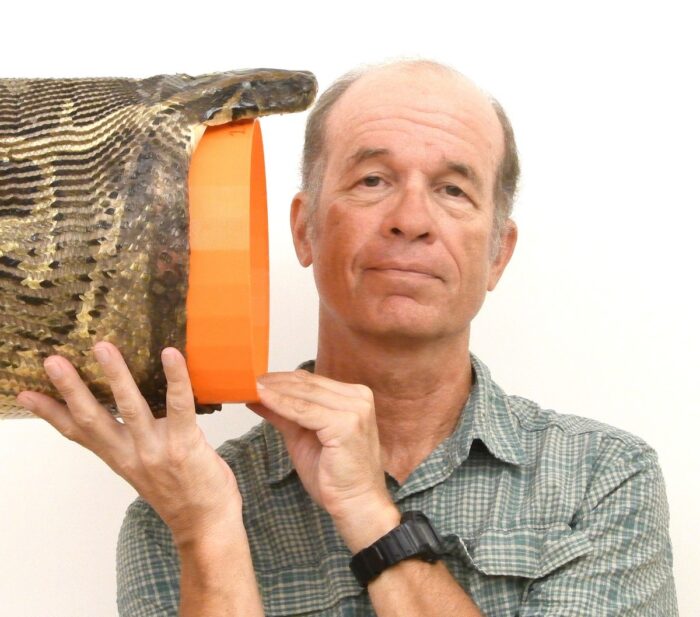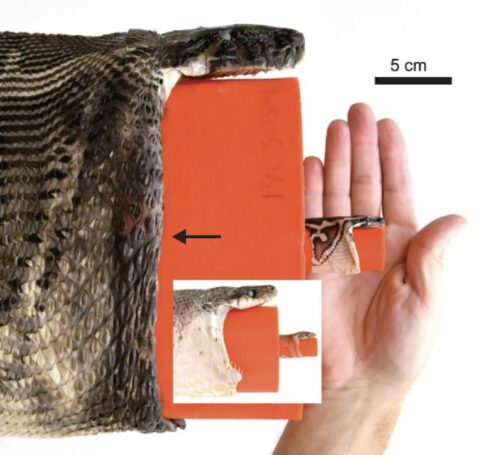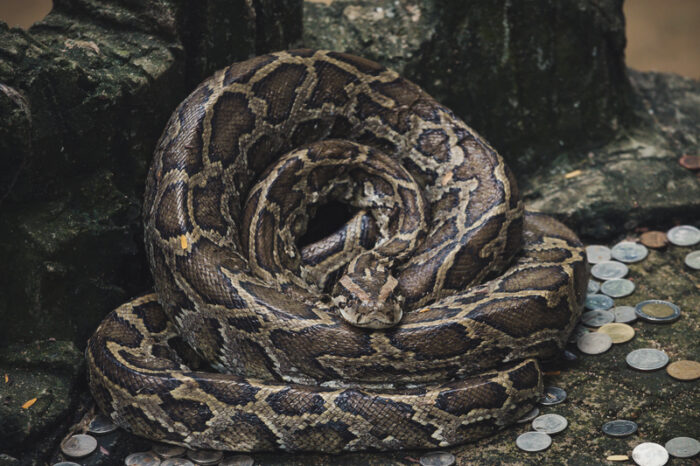"BITE size pieces, please! And chew your food!"
It's something that we've all heard before at the dinner table. And it's not just about having good manners.
Like many animals, we humans must consume our meals by separating our food into manageable pieces, and then chewing those pieces into a mash that is broken down enough to be swallowed. Then our stomachs and intestines do the rest of the work, extracting nutrients from the meal, before the waste is passed out of our bodies.
All in all, it is a pretty good process. But there are other animals that skip some of these steps by just swallowing their meals whole and sending it direct to the stomach. These animals include fish, amphibians, and many reptiles. In these cases, the only limit to what is eaten is how wide the animal can open its mouth.
And it is in this category of eating that snakes reign supreme. In particular, according to a brand new study, snakes like the Burmese python.
Researchers at the University of Cincinnati recently did a series of tests on several snake species to determine how wide they could open their jaws, also known as a gape. Their skills here allows them to eat prey that is much wider than their own bodies (think about that for a second).
The Burmese python's gapes were, well, jaw-dropping. They are able to fit prey into their bodies that is up to six times larger than what similarly-sized snakes can manage.
Stretch point #1
Hippos have jaws that swing open more widely than other mammals. But their jawbones are connected at a pair of joints. (Getty Embed)
Part of the secret of any snake's ability to eat large prey is its magic jaws. Most animals' jaws are in two pieces: an upper and a lower jawbone. These bones are connected at two joints in either corner of the mouth. These joints act like hinges on a door. This means that how wide the creature can open its mouth is limited by how broadly its can swing open its jaws.
(The hippopotamus, by the way, is a real champ here, opening its jaws to 150°, which is nearly half a full circle.)
But a snake's jawbones are not connected to each other at solid joints. Instead, they are linked by an elastic ribbon of tissue. This means that a snake's jaws don't so much swing open as the lower jaw drops down, creating a wide-open gape that allows prey to pass through.
Like we said, jaw-dropping!
Stretch point #2

Professor Bruce Jayne, and the python's mouth open around the study's largest plastic probe. You can see how the snake's lower jaw is able to drop completely while the animal's skin stretches to make its gape larger. (Courtesy of Bruce Jayne)
As amazing as this is, it is not necessarily news. We've known that this is what snakes do for a while now. But what this new study did reveal is that some snakes can take the size of their gape even further.
The Burmese python is a snake that can. It has particularly stretchy skin around its mouth, which means that its gape can go even wider. In the test at the University of Cincinnati, one python was able to stretch over a plastic cylinder that was 22 cm (9 inches) wide.
Or as Professor Bruce Jayne, who headed up the study, put it in an interview with Live Science, "The probe (plastic cylinder) is big enough to fit over my head."
The 'winning' snake was also one big customer—59 kg (130 lbs) in weight and 4.3 m (14 ft) long. "To give you an idea of how big that [snake] was," Jayne said, "it's too large to fit inside a 5-gallon (20-litre) bucket. That was a hefty one."
Bigger, safer

This photo illustration compares how much smaller the gape of other snakes are compared to the python. Even though the python is a bigger snake overall, it is also able to stretch its mouth much further relative to its body size. (Courtesy of Bruce Jayne)
A big reason why these pythons can get such a wide gape is not so much because they are long, but because they are massive. Their only enemies are crocodiles and alligators. And those are animals that the snakes could also eat.
But just because a Burmese python can eat an animal the size of a gator doesn't mean that that is always at the top of the menu. After all, once that enormous meal gets inside its stomach, it must spend weeks fully digesting it. During this time, the snake is essentially unable to move at all. That's not a good plan, even if you have very few natural predators.
In the end, a better idea is to eat more 'bite-sized' prey, like small mammals and reptiles. Things that they can grab on the go!
That said, it's still pretty cool to be the best at something, even if it's a skill that you don't need to use all that much!
 The Burmese python is found in southeast Asia, as well as Florida (where it is an invasive, or non-native, species). (ID 168443230 © Kongsak Phuangsub | Dreamstime.com)
The Burmese python is found in southeast Asia, as well as Florida (where it is an invasive, or non-native, species). (ID 168443230 © Kongsak Phuangsub | Dreamstime.com)










i love snakes!!!!!!!!!!!!!!!!!!!!!!!!!!🐍